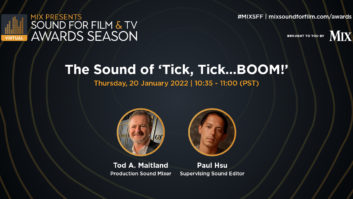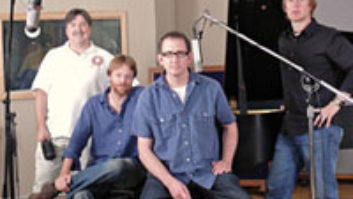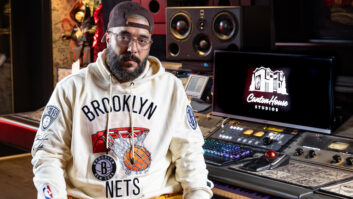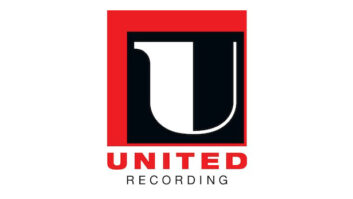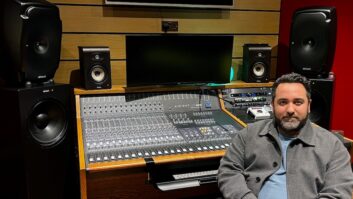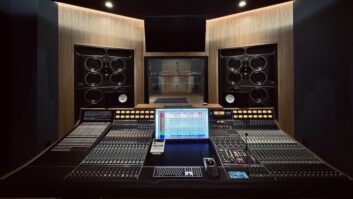Let’s get it over with, he is Tony’s son. But Dae Bennett is also an engineer who tracked and mixed Naughty By Nature’s hit OPP and a number of other successful rap and R&B projects. And he’s been a studio owner for a while now, first with Hillside Sound Studio and now with a beautiful three-room facility that operates out of a modified train depot in the leafy suburb of Englewood, N.J. He’s part of a new breed who understands that, these days, relying on sessions alone is a dicey game plan.
“We’re operating on a new business model,” says Bennett. “Project studios have obviously changed the way larger facilities like ours work. But my experience at Hillside also taught me that a single-room facility that does one thing — record and mix music — has a limited growth potential. You can be doing sessions around the clock and there’s still only so much income.”
After interviewing several of the most highly regarded designers in the industry, Bennett asked Andy Munro of London to design the new space. “Besides getting along with him personally, we wanted to offer an alternative, both sonically and visually,” Bennett explains. “I’ve done a lot of work in Europe, and the feel of the studios there is different. The rooms are thicker and more domestic-feeling.
“We ended up with a pseudo-Victorian feel in our large room that I love,” he continues. “It’s more like a music conservatory than a studio, and it has a sound that everybody loves. Andy’s acoustical treatments are handled in a modular way. He designs them in a computer and then frames the interior treatments with beautiful mill work.”
Based on his experience doing location recording, Bennett knew that quick repatching was going to be critical to his new studio, which takes in lots of projects that start in the field, as well as records that are tracked and mixed in-house or in the nearby Harms Theatre.
“I designed the machine room like a remote truck,” Bennett explains. “Everything terminates there, and we can quickly patch from one session to another. For example, our entire fiber-optic connection from the Harms Theatre to either our Neve or SSL console uses just a pair of Elco connectors. We can make that hookup in just a minute or two. Working with outside studios means that we have to be able to take in Pro Tools, analog tapes and DA-88s, as well. Regardless of format or where a Harms Theatre project needs to be patched, we can flip the two studios around in about five minutes.”
Built in the 1920s, the John Harms Theatre (used to track the Grammy™-nominated Tony Bennett/k.d. lang album) has acoustical properties that would be almost impossible to duplicate.
“When we first started working on the room, we went up to the oculus — it is high! — to throw up a microphone and realized that we could hear people talking in a normal voice on the stage. The oculus is a great place to pick up the room’s natural delay. We put everything up there, from an AKG 414 to a Coles ribbon mic. Depending on the project, we might want a mic that sounds a bit warmer or one that gives more detail. Either way, feeding a signal from a microphone placed in the oculus gives a real audio picture of the size of the space.
“For example, we recently made a live recording of the Bacon Brothers in the theater. This project will be released on DVD, and we wanted to capture the audience reaction. We chose a 414 because it gives lots of the high end. On the other hand, we needed a much more smokey sound on the record that my dad made with k.d. T Bone Burnett was the producer, and he wanted a darker sound to help keep the album moody. We went with the Coles in the oculus, and we also used a bunch of AEA 44s: these retooled versions of the old RCA 44 ribbon mics that are made out in California by Wes Dooley.
“Teddy Riley was in here recently,” Bennett adds. “He used the Harms Theatre for string work on his Black Streetrecord, which he and I engineered together. Jay Newland was also back in here for the third time this week. We’re gaining a reputation as a studio that has a great sound. Coupling that with Andy’s design work has given us the opportunity to create a unique profile in the music business.”
Bennett also has put some money and effort into nontraditional studio services. He is offering clients, and those who make their recordings elsewhere as well, the opportunity to sell their wares through the Bennett Studios Store. “Artists send projects to our central system and generate sales through our page,” he explains. “Our only criteria is that the act must be working, since that’s how product is supported.
“Eventually, we’d like to be able to deliver content directly from our site, either for promotional purposes, studio-to-studio session work or sales. I’ve set up the Internet part of our business much like the machine room, with an open-ended architecture. I believe that for a studio to survive in these times, management must be flexible.”
Gary Eskow is a Mix contributing editor.
